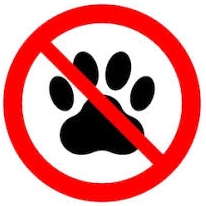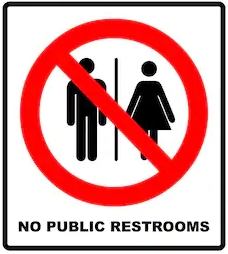STORE HOURS
MONDAYS - CLOSED
TUESDAY TO FRIDAY 10 - 6
WEEKENDS 10 - 5
LABOUR DAY MONDAY 10 - 5
THANKSGIVING DAY - 12 - 5
ALL SALES ARE FINAL
If you are uncertain in any way about any item to be purchased here, please do not make it.
 
|
Your Ontario Source for Permaloc Edging
'The World's Best Landscape Edging'
NEW! GeoEdge Green Roof Edging Now Available
Click here for more information.
|

|
|  |
 |
 |
Tips, Help & Answers
|
|
When Is The Best Time to Plant?
There is a common misconception that plants must be planted in the early spring or fall in order for them to survive. Nothing could be farther from the truth.
If a plant has to have its ROOTS CUT in order to REMOVE it from the ground, this cutting of the roots must be done while the plant is dormant (in spring or fall). The picture above, taken in October, shows an upright juniper plant being removed from the ground by a mechanized plant spade, and then placed carefuly into the fibre container being held.
Why are plants grown in containers? This technology, now more then 50 years old, conclusively proves that a plant that has been grown in a container, or one that has been placed into one at the appropriate time, can be TRANSPLANTED SUCCESSFULLY into the ground at ANY TIME. This development has resulted in the successful extension of the planting season throughout the summer months.
Frost and cold temperatures plays a part in determining when it is the best time to plant perennials, annuals and groundcovers. Most of these plants can be injured (perennials and groundcovers) or killed (annuals) if they are planted and receive a frost. In the K-W area, the generally accepted last 'frost-free' day is May 24th. That doesn't mean that it can't happen later, but by that date (not the Victoria Day holiday) you have a better chance that frost won't wreak havoc on your plants.
What's Wrong With The Plants in this Hedge?
Quite simply, they are inappropriately sited. On most homes, the property line will have a swale (a shallow ditch or depression that collects and transports rainwater). Unfortunately, most plants, including these Junipers, will not tolerate the constant moisture that the soil in the swale will have.
Dried Out by Being Too Wet?
What is interesting to note is the fact that these plants died due to winter dessication injury - they dried out in the winter. How can they be too wet because of their location and dry out as well? Because when a root system is put under severe moisture stress it can suffer root damage. Roots that are damaged don't work the way that they should and that means that they don't bring as much moisture to the fronds or needles. Insufficient moisture in the needles in the fall means an increased risk that winter will remove enough moisture from the needles to cause cell death. Dead cells turn brown - and there you have it.
My Plant Looks Like This - HELP!
Our Customer Service Hotline fields many calls every year from people who have a plant that has ended up looking like this. Is it dead? Click on the link in blue above to find out what corrective action to take to rejuvenate your plant.
|
How Do I Wrap an Evergreen for Winter?
Evergreens require moisture in the fall to accumulate in their needles to protect them from winter dessication injury. Too much moisture loss from an evergreen's needles will cause them to turn brown.
Wrapping an evergreen when it is exposed will lessen moisture loss from drying winter winds.
|
What Can Be Done About Spots in the Lawn Left by My Dog's Urine?
Animal urine contributes acidity to the area in question, and it is this acid that kills the turf. One way to counteract this acidity is to apply lime and gypsum to the 'most special' of the areas. This can be done monthly (if severe), or in the fall and spring if it is a problem that appears generally only in the spring.
Additionally, there now exist dog treats or other amendments that can be given to your pet safely that will reduce the ammonia concentration in the urine.
Why Are My Evergreens Turning Brown?
A severe drought in the summer, a long warm fall, and a brutally cold winter add up to problems for many evergreens. Click here to find out how this problem could have been prevented, and what it may mean to your plants.
When Is the Best Time To Start Grass Seed?
Turfgrass is a cool season crop and it always establishes better if the ground temperature is warm and the air temperature is cool. The two optimum seasons for establishment are mid-spring and late summer/early fall (mid-April and late August to mid-September).
However, if the ground is too cold, and conditions are wet, it is possible that the grass seed may rot. Seeding too early or too late in the season may mean that your seed germination will be less than ideal.
The viability of grass seed (how much of a bag will germinate) drops dramatically with the age of the seed. It doesn't generally pay to 'keep' seed from season to season.
If you are overseeding into established turf you might look here to for a small video on how to do this.
|
|
Do You Have Any New Ideas On Keeping Squirrels Out of Bird Feeders?
Try using a regular metal toy Slinky on your bird feeder pole. The inconsistent movement and pinching layers may help to deter them from getting into the feeder from the pole.
|
|
|
GROBE'S GARDENING ARTICLES
|
|
|
TIPS ON GROWING CEDARS
Every year we field many questions about cedars. They are generally easy to grow plants that come in many forms.
Click here for detailed information on how to succeed with cedars.
|
|
What About A Salad Pot ?
Here is a simple way to have those fresh greens and herbs on your patio or even balcony. Fill any planter you have with Fafard Veranda Mix. Plant some vegetable seedlings in the pot (you can leave some room for them to grow) and then add a little granular slow release fertilizer to the pot. Water as needed, and you will be eating out of your pots in no time!
|
|
|
|
